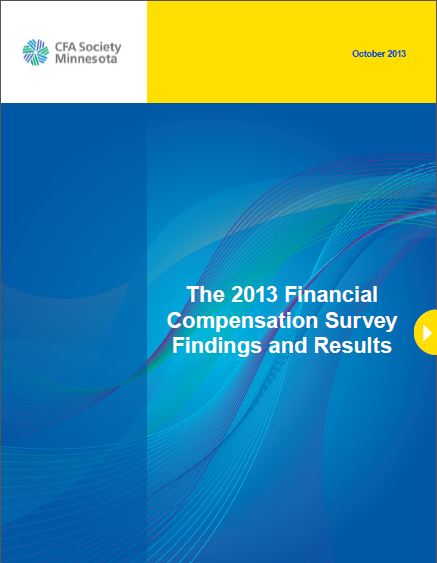I participated in a panel for the Minnesota Chapter of the National Association of Corporate Directors a Wednesday mornings a few weeks back. The audience was composed of private business owners, attorneys and accountants. Although the panel’s focus was on smart growth for private businesses, the topic is certainly relevant to any business. To keep the focus on private companies I did some research and found that private businesses, particularly family owned businesses, tend to be overcapitalized (i.e. use significantly more equity than debt), often are understaffed, and tend to focus more on the top line than the bottom line. All three of these traits impact growth in significant ways. Finite capital is a problem for any firm but a private company relying on equity is even more challenged. This “equity” is all internally generated and forces firms to make tough choices on how to fund growth. Understaffed businesses will find that their human capital resources are stretched too thin to be able to manage any growth in the business, and will likely not even have the time to adequately evaluate any ideas that could generate growth opportunities. And the final point, the over-reliance on top line growth, is in my mind the most problematic of all. If the mindset is to meet revenue growth projections the decision makers are likely to chase revenue with little analysis of the impact on profitability. This not only causes tension with finite capital but it can also quickly destroy value. To that point I ended my presentation with the following example that showed how conserving capital can add value. Continue reading
It’s That Time of Year Again!
Now that we are entering October, we Upper Midwesterners have to look forward to a dreary period of time when days are darker, our skin starts to shiver and our hearts beat faster to move our chilled blood. I am speaking, of course, of Earnings Season.
After listening to countless conference calls, several detailed phone discussions and reading/writing many reports we need to figure out what we think these securities are worth. But what method does one use for valuation? Price to Earnings is the most popular and can be used across sectors, but can be managed via accounting methods and is not useful for early stage/pre-earnings companies. Price to Sales combats some of those problems and can be the least susceptible to accounting noise, but can overlook poor cost oversight. Enterprise Value to EBITDA works well because it can reflect the cash generation characteristics of a company and is comparable across capital structures but can be difficult to utilize across industries. Price to Book can be the go to valuation for pre-earnings companies but can be difficult to use due to differences in accounting assumptions. We have other valuation tools as well, discounted cash flow, PEG ratios and many others.
Naturally, we use each of these valuation methods on a daily basis and some may work better than others for certain sectors and certain situations—and we all need to use a combination to get a more qualified valuation picture. But usually we have our favorites and one that we typically put more weight on than others—especially during the screening process. Do you have a valuation method that you go to more often than others? What do you think?
Enter Sandman
It has been a quiet week in Credit. We are coming off of the biggest month ever in terms of supply – September saw almost $150 billion in new issue, which the market readily absorbed. Spreads rallied nicely after the Fed no-action. Even the Street seemed like they were turning just a little more positive, possibly increasing their balance sheet. Then we ran smack into October, and it feels like everyone has gone to sleep. Things usually slow down a little bit this time of year – it’s quarter end, companies are entering their earnings blackout period (during which they can’t issue debt), and portfolio managers start to focus on protecting their performance during the 4th quarter. This year it feels almost like December, and we are sure that the Government shut-down, rapidly rolling towards the debt ceiling, is a big part of the reason. Nobody wants to place a bet on the political process.
Against that backdrop, few issuers stepped up to the plate this week. Supply was light, with about $15 billion issued in a smattering of new deals. American Honda Finance was the biggest transaction of the week – they printed $2.75 billion in three tranches. This was the Company’s first registered deal (previous transactions were all 144a), so that was pretty exciting. The deal was significantly oversubscribed, and bonds tightened around 10 basis points after the deal freed to trade.
While issuers seem inclined to join the shutdown, buyers on the whole remain pretty content. Spreads have moved mostly sideways this week, and in contrast to the debt ceiling debacle of August 2011, they aren’t showing any signs of stress as we watch the scene in Washington play out. In secondary markets, credit feels pretty well bid, and we think it’s been tougher to get good offers.
In spite of what appears to be a benign environment, it feels to me like we better sleep with one eye open.
The CFA’s Code of Ethics and Standards of Professional Conduct May Be More Influential than You Think
As you know, CFA members and candidates, must follow the CFA’s Code of Ethics and observe the Standards of Professional Conduct. These rules set a high standard of conduct that sets CFA members apart from other participants in the capital markets. Recent scandals in the financial services industry support the notion that CFA membership reflects a higher calling.
Code of Ethics
Among other things, the Code of Ethics requires that members act with integrity, competence, diligence, and respect, Members must act ethically to the public, clients, employers, colleagues and other participants in the capital markets.
Standards of Professional Conduct
The Standards of Professional Conduct set specific behavioral requirements on professionalism, integrity, and discharging duties to clients, employers, and the Institute. Members must comply with laws and regulations, and exercise independence and objectivity. For capital markets, members are of course prohibited from insider trading, tipping and market manipulation. Members must exercise duties of loyalty, fair dealing, and suitability. Members must present performance data accurately and preserve client confidentiality. Members also owe duties of loyalty to employers, and may not accept benefits that might create conflicts of interest. Members must be diligent, independent and thorough in making investment recommendations, and have a reasonable basis for recommendations supported by research. Members owe disclosure duties to clients and must retain records to support investment recommendations. Conflicts of interest must be disclosed fully, fairly, and prominently. Transactions for clients must take priority over member’s own transactions. Finally, members may not engage in conduct that harms the reputation or integrity of the Institute including avoiding misrepresenting or exaggerating the meaning of membership. Continue reading
Compensation Survey Results
 Knowledge is Power
Knowledge is Power
We’re excited to release the results of our 2013 Financial Compensation Survey, the first in-depth look at compensation levels in the Twin Cities and surrounding region since 2007.
Click the image at right to download, at no charge, this white paper summarizing high-level survey findings in an easy-to-read format. In return for the white paper or for deeper data requests, please complete the contact form below. Your feedback is welcome and appreciated.
Thanks for your interest!





